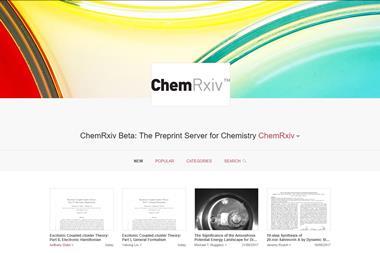Preprint and peer review policies at top journals, including chemistry ones, are often vague and imprecise.
An Austrian and US team surveyed 171 major academic journals from across disciplines, and found that almost a third offer no information on the type of peer review they use, and nearly 40% have ambiguous rules about whether preprints can be posted or not. Roughly three-quarters of the journals lack clear policies on ‘co-reviewing’ of research papers, citation of preprint articles and publication of reviewer identities.
‘If there is no guidance on whether certain practices are encouraged or prohibited, submitting and reviewing for journals becomes a minefield that is not easily navigated,’ the researchers conclude. They caution that early career researchers who are less accustomed to, and aware of, certain norms in their field might be discouraged from participating in the scholarly publishing process.
The authors also suggest that researchers might be reluctant to post or cite preprints if they cannot be sure how this will affect their submission, and reviewers could be wary of signing their reviews or involving junior colleagues if they do not know how editors will handle reviews.
The findings don’t surprise Bahar Mehmani, a publishing innovation manager at Dutch publishing giant Elsevier. ‘It is true that journal guidelines and policies are not well maintained,’ she tells Chemistry World. ‘Update and maintenance of journal guidelines are suboptimal and have to be improved. The study proves the point.’
Of the disciplines that the team examined, the life and earth sciences have the clearest policies pertaining to preprints. The chemical and material sciences, as well as physics and mathematics, and health and medical sciences, are more clear about preprints than the average journal in the study’s sample.
The analysis reveals disciplinary differences among the publishers of the journals sampled. For example, journals from Springer Nature and the Royal Society of Chemistry were found to be ‘well above average’ in regard to policy clarity, while the American Chemical Society represented ‘the average’ of journals sampled. Elsevier, the Institute of Electrical and Electronics Engineers, and several other publishers were deemed ‘below average’ when it comes to the clarity of their policies.
Study co-author Thomas Klebel, a data scientist from Graz University of Technology in Austria, says all of the chemical and materials science journals sampled have policies clarifying whether authors can post a preprint. However, Klebel notes that four of 21 chemical sciences journals explicitly prohibit posting of preprints, which is not the case in the life and earth sciences journals.
The data reveals that the chemical sciences are behind the biological and other physical sciences in adoption of preprints. ‘In the life sciences, there is a healthy uptake, but in the chemical sciences there are explicit anti-preprinting policies,’ explains study co-author Gary McDowell, founder and chief executive of the consultancy Lightoller. These include prohibitions against publishing in journals after publishing a preprint, and rules that authors can only cite peer-reviewed papers, not preprints, he says.
References
T Klebel et al, BioRxiv, 2020, DOI: 10.1101/2020.01.24.918995

















No comments yet